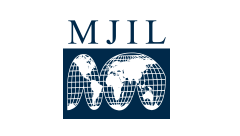Abstract
Over the last few decades, advances in transportation and production technology, in conjunction with economic globalization and the emergence of multinational corporations, have consolidated fragmented production processes into long and complex supply chains across jurisdictions. While there are benefits to such global supply chains (“GSCs”), the prevalence of human rights violations attributable to information asymmetry, as well as rule of law gaps between different jurisdictions, has been a constant challenge. Modern slavery, child abuse, harsh working conditions, low wages, and other problems have reoccurred in the factories of upstream suppliers in the global South and have been systemically ignored by buyers in the global North. As such, how to alleviate human rights abuses along GSCs is indeed a daunting problem.
Today, various public, private, and hybrid approaches have been designed and implemented at different levels by different actors to address GSC human rights challenges, such as the United Nations’ Guiding Principles on Business and Human Rights (“UNGPs”), the Organization for Economic Co-operation and Development’s (“OECD”) Guidelines for Multinational Enterprises, the United Kingdom’s Modern Slavery Act, the United States’ Dodd-Frank Act, the Responsible Business Alliance Codes of Conduct, and the Social Accountability 8000 International Standard. However, these public, private, and hybrid governance mechanisms have grown more ineffective and inefficient due to—again—information asymmetry, and rule of law gaps. A stronger approach that is premised upon transparency and traceability in the GSC is urgently needed.
To fill these gaps, the recent emergence of distributed ledger technologies (commonly referred to as blockchain) may offer a promising disintermediation step toward a “technological fix” to GSCs’ human rights challenges. To assess such a possibility from both a theoretical and a practical perspective, we first examine in Section II the characteristics, benefits, and cross-border spillover effects of GSCs, as well as human rights violations by multinational corporations and their power and responsibilities. Section III illuminates the ineffectiveness of existing governance models and regulatory measures, at both the international and national levels, and identifies information asymmetry and rule of law gaps as fundamental flaws. This finding leads us to examine the extent to which blockchain can serve as a governance tool along GSCs. Section IV discusses how the key features of blockchain—transparency, traceability, data consistency and security, authenticity, and completeness—can alleviate problems of information asymmetry, rule of law gaps, and corporate compliance along GSCs, further helping to ameliorate transnational human rights issues. Nevertheless, while “blockchainizing” GSCs seems to have the potential to overcome challenges of public and private governance, some normative and technical limits and risks remain to be addressed, such as adequate infrastructural support, scalability, cybersecurity, and the “garbage in, garbage out” conundrum.
Recommended Citation
Chang-hsien Tsai & Ching-Fu Lin,
Shedding New Light on Multinational Corporations and Human Rights: Promises and Limits of “Blockchainizing” the Global Supply Chain,
44
Mich. J. Int'l L.
117
(2023).
Available at:
https://repository.law.umich.edu/mjil/vol44/iss1/4
Included in
Human Rights Law Commons, International Law Commons, Law and Economics Commons, Transnational Law Commons

